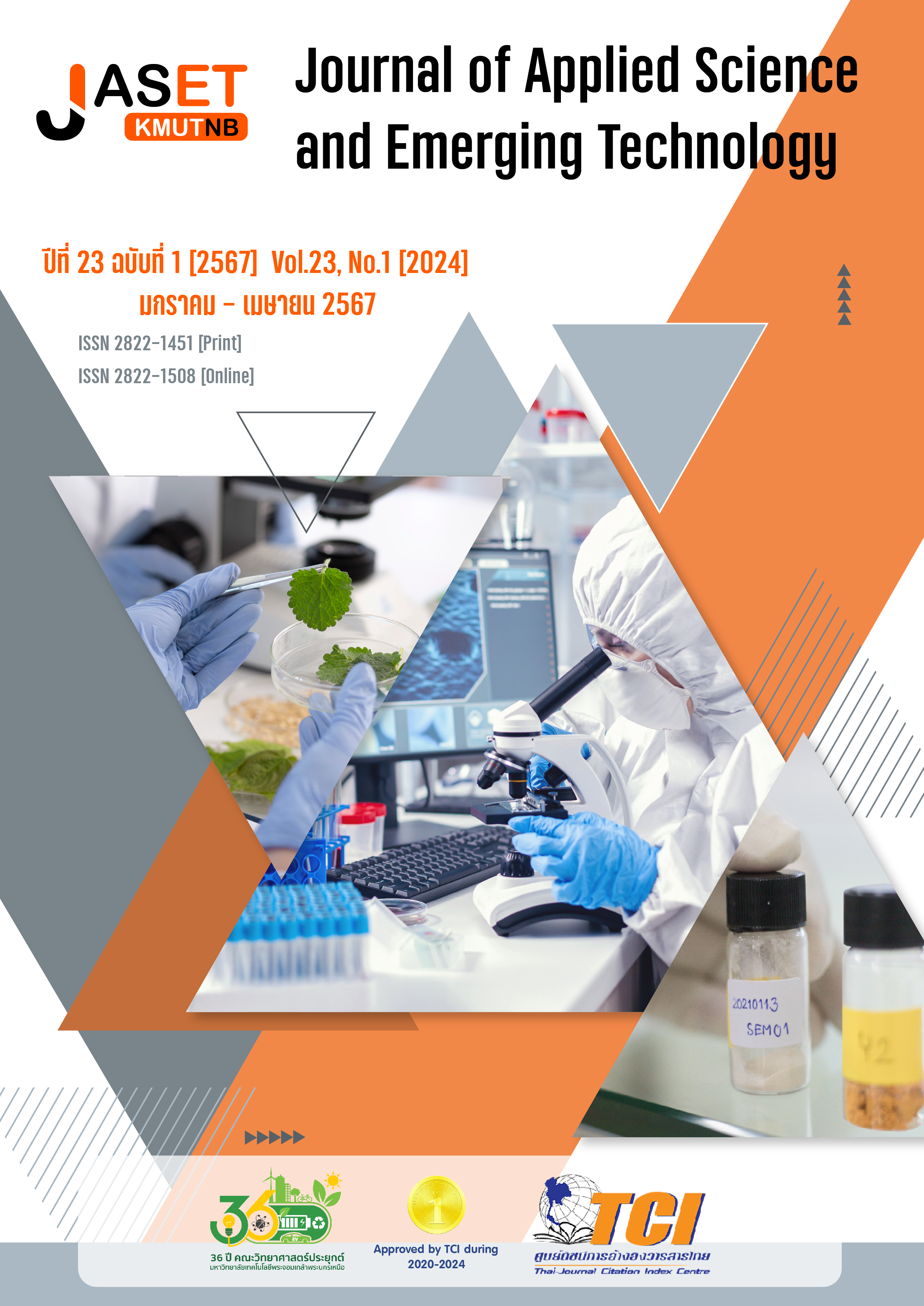Seaweed biorefinery potential: Utilization of sulfated polysaccharide for chemical feedstock via pyrolysis
Keywords:
Biomass, Biorefinery, Pyrolysis, Seaweed, Sulfated polysaccharideReferences
Alalwan, H., Alminshid, A., & Aljaafari, H. (2019). Promising evolution of biofuel generations. Subject review. Renewable Energy Focus, 28,127-139.
Bae, Y., Ryu, C., Jeon, J., Park, J., Suh, D., Suh, Y., Chang, D., & Park, Y. (2011). The characteristics of bio-oil produced from the pyrolysis of three marine macroalgae. Bioresource Technology, 102(3),3512-3520.
Baghel, R., Trivedi, N., Gupta, V., Neori, A., Reddy, C., Lali, A., & Jha, B. (2015). Biorefining of marine macroalgal biomass for production of biofuel and commodity chemicals. Green Chemistry, 17(4),2436-2443.
Bermúdez, J., Francavilla, M., Calvo, E., Arenillas, A., Franchi, M., Menéndez,J., & Luque, R. (2014). Microwave-induced low temperature pyrolysis of macroalgae for unprecedented hydrogen-enriched syngas production. Rsc Advances, 4(72),38144-38151.
Bridgwater, A., Meier, D., & Radlein, D. (1999). An overview of fast pyrolysis of biomass. Organic Geochemistry, 30(12),1479-1493.
Budarin, V., Zhao, Y., Gronnow, M., Shuttleworth, P., Breeden, S., Macquarrie, D., & Clark, J. (2011). Microwave-mediated pyrolysis of macro-algae. Green Chemistry, 13(9),2330-2333.
Camp, J., & Greatrex, B. (2022). Levoglucosenone: Bio-based platform for drug discovery. Frontiers in Chemistry, 10,902239.
Cesário, M., Da Fonseca, M., Marques, M., & De Almeida, M. (2018). Marine algal carbohydrates as carbon sources for the production of biochemicals and biomaterials. Biotechnology Advances, 36(3),798-817.
Chowdhury, H., & Loganathan, B. (2019). Third-generation biofuels from microalgae: a review. Current Opinion in Green and Sustainable Chemistry, 20,39-44.
Comba, M., Tsai, Y., Sarotti, A., Mangione, M., Suárez, A., & Spanevello, R. (2018). Levoglucosenone and its new applications: valorization of cellulose residues. European Journal of Organic Chemistry, 2018(5),590-604.
Gautam, R., Shyam, S., Reddy, B., Govindaraju, K., & Vinu, R. (2019). Microwave-assisted pyrolysis and analytical fast pyrolysis of macroalgae: product analysis and effect of heating mechanism. Sustainable Energy & Fuels, 3(11),3009-3020.
Guo, M., Song,W., & Buhain, J. (2015). Bioenergy and biofuels: History, status,and perspective. Renewable and Sustainable Energy Reviews, 42,712-725.
Halpern, Y., Riffer, R., & Broido, A. (1973). Major product of the acid-catalyzed pyrolysis of cellulose and related carbohydrates. Journal of Organic Chemistry Research, 38(2),204-209.
He, J., Liu, M., Huang, K., Walker, T., Maravelias, C., Dumesic, J., & Huber, G. (2017). Production of levoglucosenone and 5-hydroxymethylfurfural from cellulose in polar aprotic solvent–water mixtures. Green Chemistry, 19(15), 3642-3653.
Hu, Y.,Li, J., Wang, S., Xu, L., Barati, B., Cao, B., Wang, H., Xie, K., & Wang, Q. (2021). Catalytic fast hydropyrolysis of seaweed biomass with different zeolite catalysts to produce high-grade bio-oil. Process Safety and Environmental Protection, 146,69-76.
Jiang, D., Xia, Z., Wang, S., Li, H., Gong, X., Yuan, C., Abomohra, A., Cao, B., Hu, X., He, Z., & Wang, Q. (2019). Mechanism research on catalytic pyrolysis of sulfated polysaccharide using ZSM-5 catalysts by Py-GC/MS and density functional theory studies. Journal of Analytical and Applied Pyrolysis, 143,104680.
Jung, K., Lim, S., Kim, Y., & Park, J. (2013).Potentials of macroalgae as feedstocks for biorefinery. Bioresource Technology, 135,182-190.
Kawamoto, H., Saito, S., Hatanaka, W., & Saka, S. (2007). Catalytic pyrolysis of cellulose in sulfolane with some acidic catalysts. Journal of Wood Science, 53,127-133.
Kim, Y., Han, T., Lee, B., Watanabe, A., Teramae, N., Kim, J., Park, Y., Park, H., & Kim, S., (2018).Analytical pyrolysis reaction characteristics of Porphyratenera. Algal Research, 32,60-69.
Kitiborwornkul, N., & Sriariyanun, M. (2024). Bio-circular-green economic model BCG and lignocellulose biorefinery: Advancing sustainable development and climate change mitigation. The Journal of KMUTNB, 34(1), 241-007308. https://doi.org/10.14416/j.kmutnb.2023.11.006
Klepp, J., Dillon, W., Lin, Y., Feng, P., & Greatrex, B. (2020). Preparation of (-)-levoglucosenone from cellulose using sulfuric acid in polyethylene glycol. Organic Syntheses, 97,38-53.
Konda, N., Singh, S., Simmons, B., & Klein-Marcuschamer, D. (2015). An investigation on the economic feasibility of macroalgae as a potential feedstock for biorefineries. BioEnergy Research, 8,1046-1056.
Michalak, I. (2018). Experimental processing of seaweeds for biofuels. Wiley Interdisciplinary Reviews. Energy and Environment, 7(3),e288. https://doi.org/10.1002/wene.288
Phakeenuya, V.,& Kitiborwornkul, N. (2023). Recent progress in biorefining processfor production of biofuels, biochemicals and biomaterials from lignocellulosic biomass. The Journal of KMUTNB, 34(4),1-8. https://doi.org/ 10.14416/j.kmutnb.2023.03.002
Phusantisampan, T., & Kitiborwornkul, N. (2022). Progress in chemical pretreatment of lignocellulose biomass for applications in biorefinery. The Journal of KMUTNB, 32(4),1087-1101.
Rodiahwati, W., Brown, T., & Greatrex, B. (2023). Formation of levoglucosenone and furfural from three different carrageenans via acid-catalyzed pyrolysis in polyethylene glycol. Bioresource Technology Reports, 23,101576.
Rodiahwati, W., Brown, T., & Greatrex, B. (2023). Sulfuric acid-catalyzed pyrolysis of iota-carrageenan in polyethylene glycol. Journal of Analytical and Applied Pyrolysis, 170,105904.
Sarotti, A., Zanardi, M., Spanevello, R., & Suarez, A. (2012). Recent applications of levoglucosenone as chiral synthon. Current Organic Synthesis, 9(4),439-459.
Torres, M., Kraan, S., & Domínguez, H. (2019). Seaweed biorefinery. Reviews in Environmental Science and Bio/Technology, 18,335-388.
Wang, S., Hu, Y., Uzoejinwa, B., Cao, B., He, Z., Wang, Q., & Xu, S. (2017). Pyrolysis mechanisms of typical seaweed polysaccharides. Journal of Analytical and Applied Pyrolysis, 124,373-383.
Xue, Z., Zhang, W., Yan, M., Liu, J., Wang, B., & Xia, Y. (2017). Pyrolysis products and thermal degradation mechanism of intrinsically flame-retardant carrageenan fiber. RSC Advances, 7(41),25253-25264.
Yang, H., Yan, R., Chen, H., Lee, D., & Zheng, C. (2007). Characteristics of hemicellulose, cellulose and lignin pyrolysis. Fuel, 86(12-13),1781-1788.
Zaky, A., Greetham, D., Tucker, G., & Du, C. (2018). The establishment of a marine focused biorefinery for bioethanol production using seawater and a novel marine yeast strain. Scientific Reports, 8(1),12127.
Downloads
Published
Issue
Section
Categories
License
Copyright (c) 2023 Journal of Applied Science and Emerging Technology

This work is licensed under a Creative Commons Attribution-NonCommercial-NoDerivatives 4.0 International License.


